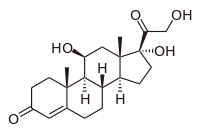
Photo from wikipedia
Tasmanian devils (Sarcophilus harrisii) are at risk of extinction in the wild due to Devil Facial Tumour Disease (DFTD), a rare contagious cancer. The prevalence of DFTD differs by age… Click to show full abstract
Tasmanian devils (Sarcophilus harrisii) are at risk of extinction in the wild due to Devil Facial Tumour Disease (DFTD), a rare contagious cancer. The prevalence of DFTD differs by age class: higher disease prevalence is seen in adults (2–3 years) versus younger devils (<2 years). Here we propose that immunological changes during puberty may play a role in susceptibility to DFTD. We show that the second year of life is a key developmental period for Tasmanian devils, during which they undergo puberty and pronounced changes in the immune system. Puberty coincides with a significant decrease in lymphocyte abundance resulting in a much higher neutrophil:lymphocyte ratio in adults than subadults. Quantitative PCR analysis of gene expression of transcription factors T-bet and GATA-3 and cytokines interferon gamma (IFN-γ) and interleukin 4 (IL-4) revealed a drastic increase in GATA-3 and IL-4 expression during puberty. These changes led to a significantly lower IFN-γ:IL-4 ratio in 2-year-olds than <1 year olds (on average 1.3-fold difference in males and 4.0-fold in females), which reflects a major shift of the immune system towards Th2 responses. These results all indicate that adult devils are expected to have a lower anticancer immune capacity than subadults, which may explain the observed pattern of disease prevalence of DFTD in the wild.
Journal Title: Scientific Reports
Year Published: 2017
Link to full text (if available)
Share on Social Media: Sign Up to like & get
recommendations!